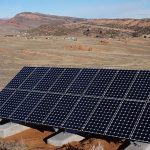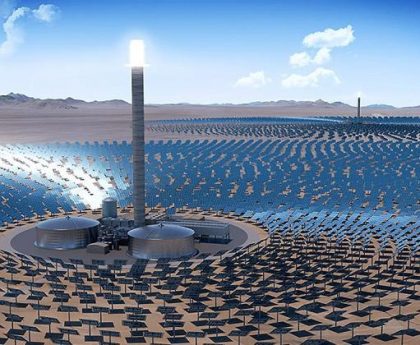Sign up for daily news updates from CleanTechnica on email. Or follow us on Google News!
In the United States, there are some people who have less financial means and therefore have reduced access to technology. Around the year 2000, the term “digital divide” was floating around to reference this gap. For consumers today, there is something of a clean energy divide, in that home solar power is not affordable for every homeowner. Fortunately, there are some government programs that provide support to homeowners to solve this problem. The state of Maryland offers such financial support so people with less money can still have a chance to own and benefit from having their own home solar power.
The non-profit organization and Maryland Energy Administration (MEA) grantee Building Change and SunPower answered some questions about the Maryland home solar power program for CleanTechnica.
Are the systems free to Maryland residents? How many will be installed?
The Maryland Energy Administration (MEA) will fund 100% of the solar system design and installation up to $25,000 per home. Costs may include funding for roof repair/replacement in the vicinity of the solar array, structural support of the roof, and mold remediation in areas needed to support the installation of the solar array and supporting equipment.
In 2022, MEA awarded around $1.5 M in these solar grants and awarded upwards of $3 M in 2023. Including both the FY22 and FY23 programs, MEA will have funded a total of 240 individual home system installations.
How can Maryland low-income residents apply to get a free home solar power system, and what qualifies as low-income?
A homeowner must qualify in the Low Income Category established by the Maryland Department of Housing and Community Development (DHCD). The program defines “low income” as household income that is at or below 175% of the federal poverty level. If a homeowner meets the criteria, they are initially eligible. Inspections of the home related to roof condition or other faults are required and evaluated to ensure a system can be installed.
Eligible households must already have received an energy audit through the MEA Energy Efficiency Equity (EEE) program, as well as “significant” energy efficiency upgrades. Residents apply through non-profit partners who receive grants from MEA such as Building Change.
Once the home solar power system has been installed, approximately how much can a homeowner expect to save on their monthly power bill?
Savings depends on the size of the home and solar system, as well as a household’s current energy usage.
Nationwide, SunPower customers can save an average of $213/month on their electric bills depending on their utility and where they live.
Will the home solar installation replace or partially replace grid energy or energy sourced from fossil fuels?
Our warming planet is putting new pressures on the grid. Heatwaves, wildfires, and storms are making it challenging to deliver the reliable, consistent energy we need to power our daily lives. With solar, we’re creating a scalable way to take load off the grid while enabling homeowners to save on their energy bills.
How long is the application and installation process for a homeowner?
From application to installation, the process for the homeowner can take up to 6 months. Maryland is exploring the implementation of online permitting tools that streamlines/automates permitting review which can help reduce the time to install.
With digital technology like this, such as SolarAPP+, SunPower estimates that they’ve saved 9,333 days (about 25.5 years) of permitting time since last summer.
Can you share an initial estimate regarding a reduction in carbon emissions thus far by installing the home solar systems?
SunPower is helping customers and communities drive down carbon emissions across the nation. SunPower-enabled solar projects have generated 173 terawatt-hours (TWh) since 2005. This is equivalent to a reduction of 123 million metric tons of carbon dioxide equivalent.
Here is how that breaks down, according to the company’s 2022 ESG report.
What has the response been from homeowners who have had their solar systems installed?
This program makes solar energy possible for low-income communities who would otherwise not be able to participate in the clean energy transition. The homeowners who’ve received these systems are already seeing the numerous benefits, including cost savings.
One Maryland homeowner who participated in the program, Felix Z, says:
“In the summer, my monthly electricity bill was almost $150. In an effort to lower it, I was looking at getting my windows replaced and better insulation when I met Building Change. They helped me learn about solar and made it an easy process from designing the system to installing it in less than a day. This month my bill was $8 with our new SunPower solar system and I can use my AC as much as I want. I’m so grateful for Building Change who helped me and my family. It’s good for us and even better for the environment.”
Is the equipment in the home solar systems covered by warranties, and who is responsible for maintaining and repairing them if necessary?
SunPower Equinox panels are backed by an industry-leading 25-year warranty covering parts, labor, and power production. They are the only U.S. residential solar company that has been around longer than their warranty.
Have a tip for CleanTechnica? Want to advertise? Want to suggest a guest for our CleanTech Talk podcast? Contact us here.
Latest CleanTechnica.TV Video
[embedded content]
CleanTechnica uses affiliate links. See our policy here.
This post was originally published on 3rd party site mentioned in the title of this site




